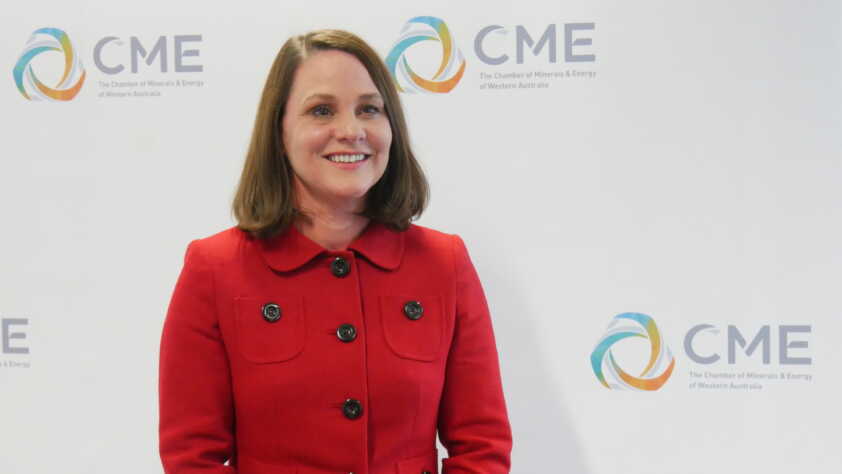Record contributions from the mining and resources sector have helped lift WA to a State Budget surplus of $5.6 billion, with the State’s economy forecast to grow by a further 3.5 per cent in 2021-22.
WA Treasurer and Premier Mark McGowan confirmed in his budget speech that the mining and resources sector’s ability to continue operating throughout the COVID-19 pandemic amid strong commodity prices had been a pivotal factor in the State’s healthy economic results and outlook.
The Chamber of Minerals and Energy of WA’s Director of Policy & Advocacy, Rob Carruthers, said the mining and resources sector had negotiated several challenges over the past 12 months – including the continuing impact of COVID-19 and an ongoing skills shortage affecting multiple industries – but remained the cornerstone of the WA and Federal economies.
“The $12.7 billion in royalties, North West Shelf grants and lease rentals generated by mining and resources sector operations were the State’s biggest single revenue stream in 2020-21,” Mr Carruthers said.
“Indeed, these contributions totalled more than 31 per cent of all WA Government revenue and increased 36 per cent on the previous financial year.
“We’re very proud of the way our sector has been able to continue operating safely and effectively despite the ever-present challenges associated with COVID-19, generating benefits for communities right across Western Australia and contributing significantly to job creation in the State. It’s telling that employment grew 1.7 per cent in WA in 2020-21 in the face of the pandemic and jobs in mining and resources were a major part of that.
“The revenue provided by our sector allows the WA Government to make vital investments in the State’s health and education systems and other essential services.
“WA’s economy is set to grow faster than it has at any time since 2013-14 and we are delighted by the contribution mining and resources will make to that.”
Mr Carruthers said projected royalties totalling $10.9 billion in 2021-22 reflected the exciting opportunities being realised by the WA mining and resources sector.
This would contribute to a forecasted $2.8 billion operating surplus for the State.
“This projected royalties figure will also eclipse the previous record,” Mr Carruthers said.
“Iron ore is the commodity most associated with WA and it’s good to see forecast royalty revenue from that of $9.2 billion next financial year – noting the state has been prudent to project iron ore prices declining slightly from where they currently are and then returning to their long-run average over forward estimates.
“Royalties from most major commodities are expected to increase in 2021-22, including nickel, copper and lithium, bearing out the extremely bright future for WA that is predicted in the battery minerals and new energy space.
“North West Shelf Grants are also projected to increase by more than $200 million in 2022-22.
“With some $140 billion of projects currently in the WA mining and resources pipeline, it’s certainly a very exciting time for our sector and for WA as a whole. Our shared challenges is to maximise on these opportunities, and government has a vital role in providing the competitive foundation for large-scale investment.”
CME’s pre-budget submission highlighted a variety of policy areas it would like to see addressed, including
- ongoing certainty regarding COVID-19 operating protocols
- maintenance of stable and sustainable fiscal management, including no new or increased costs of doing business in WA
- meaningful reduction in approvals timeframes and the regulatory burden of doing business
- securing access to a diverse and skilled workforce, including from outside WA where acute shortages exist
- and promoting clear and scalable frameworks to incentivise downstream value-add investments
Mr Carruthers said it was encouraging to see several budget announcements aligning with this.
“Funding for upgrades to STEM facilities at schools across the State is another step towards preparing our workforce of the future,” Mr Carruthers said.
“It’s also pleasing to see funding allocated towards extra vocational education and training places at TAFE and a VET ‘career taster’ program for Year 9 students from 2022.
“But our sector’s skills shortages are acute and being felt right now. Additional funding allocated to COVID-19 response measures, including the vaccination rollout, are therefore welcome and we note the budget’s reference to a purpose-built quarantine facility, which – while not yet funded – will be an important development going forward.
“From a regulatory perspective, it’s absolutely vital the Streamline WA initiative delivers tangible and meaningful improvements to project approval timeframes. Funding for 152 ongoing full-time staff across a range of different WA Government agencies will assist, however more heavy lifting is required to efficiently manage project approval processes.
“A $100 million allocation to an Investment Attraction and New Industries Fund across a range of emerging sectors, including battery manufacturing and green steel, is another positive development.
“Additionally, several CME member companies have announced significant investments in renewable hydrogen over the past 12 months, and it was pleasing to see the WA Government announce in the lead-up to the budget that it would commit $61.5 million to help fund development of this nascent industry.”








